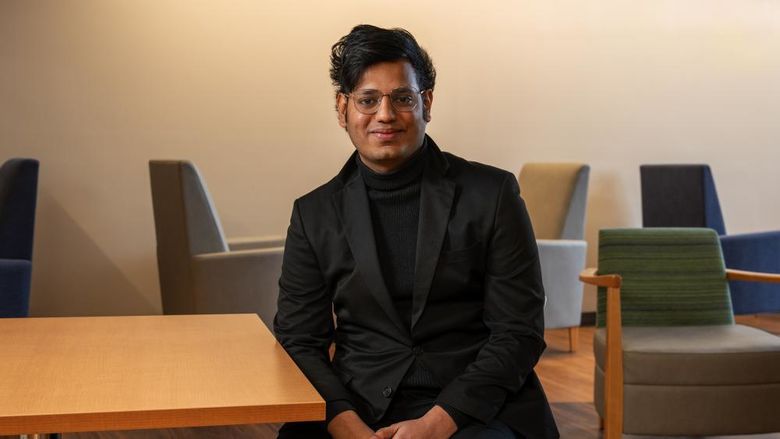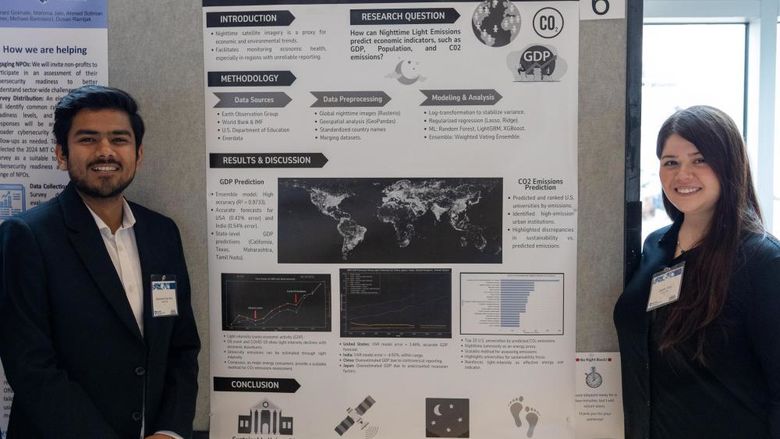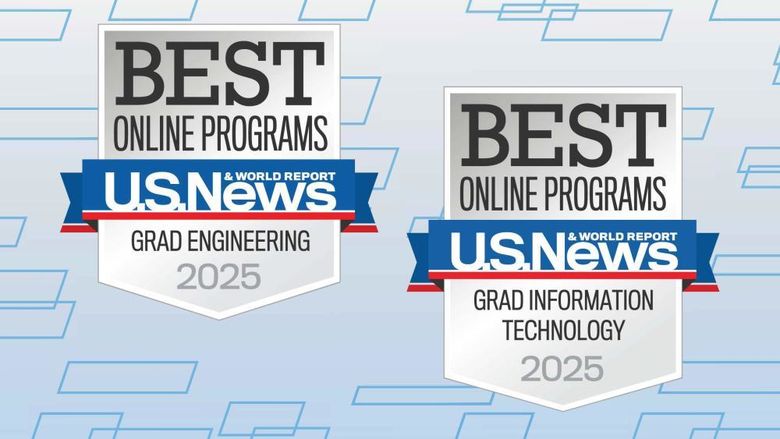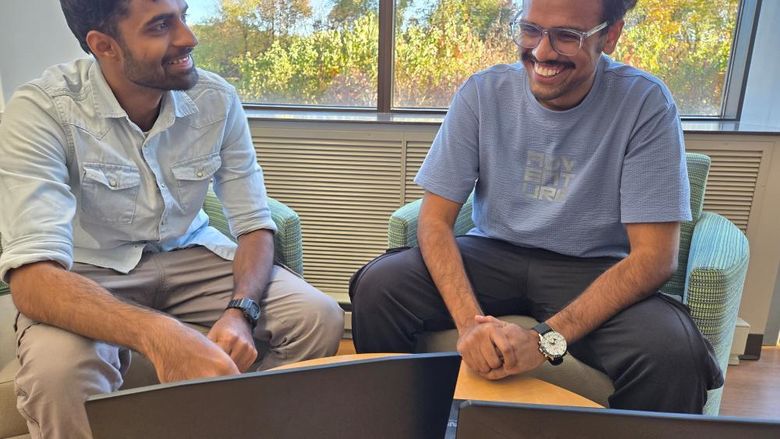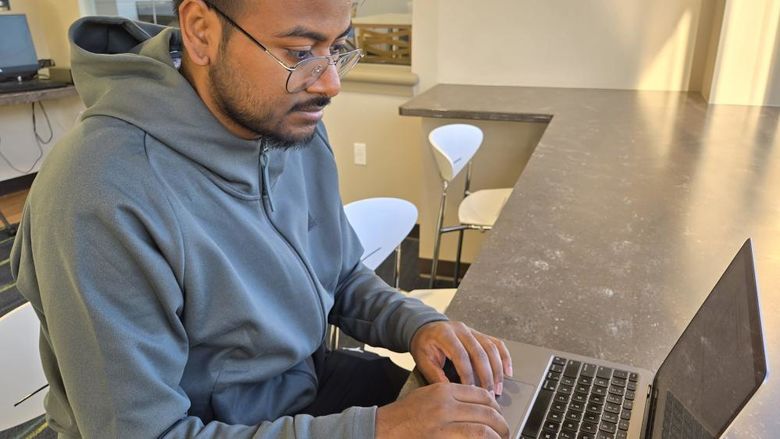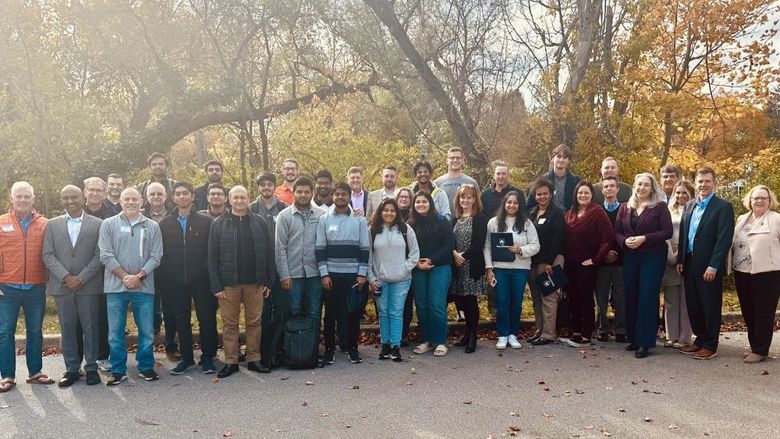MALVERN, Pa. — Penn State Great Valley students find a variety of ways to apply their skills outside of the classroom, including through part-time research assistantships to assist faculty. For recent Master of Professional Studies in Data Analytics graduates Abhay Chamu Haridas and Rudraksh Mishra, the knowledge they’ve gained from their assistantships has been invaluable in many ways.
Haridas and Mishra spent the 2021-22 academic year as research assistants for Assistant Teaching Professor of Information Science Dusan Ramljak. Towards the start of their assistantships, Ramljak asked the pair to pitch an idea for a project, something they were interested in and hadn’t been done before.
After a few weeks of brainstorming, Haridas and Mishra, decided to work on a project about automatic online portfolio management — tools and technologies that could create a model that would help users decide how to best invest their money based on their income, age, debts, financial goals, and more.
“The most challenging aspect that we considered was how to measure the risk tolerance of a particular individual, so we started researching the most adopted state-of-the-art technologies available in the market,” Mishra said.
Since neither Haridas nor Mishra had backgrounds in finance, Ramljak introduced them to several retired bankers to learn more about how investments and risk assessment work. The bankers also provided helpful input — Haridas and Mishra realized just how extensive and multifaceted measuring risk tolerance would be. With that in mind, they focused on breaking the ambitious idea into multiple smaller projects to better manage the workload and the time constraints of their assistantship.
Haridas and Mishra surveyed relevant papers, examining the dominant approaches in financial risk management and automated portfolio management, and to what extent machine learning and artificial intelligence are driving those approaches.
The experience was helpful not only for their research, but also for their coursework and summer internships; examining different technologies in detail helped Haridas and Mishra get in the habit of trying to explore problems from new, innovative angles.
“What I enjoyed about it was how it broadened our horizons,” Haridas said. “A lot of these concepts, we didn’t know until they were introduced to us through our research assistantship.”
Haridas and Mishra compiled their findings into a paper, which was published as a co-authored chapter called “Online Portfolio Management: A Survey of Data-Driven Approaches” in “City, Society, and Digital Transformation.”
Though their assistantship and time at Penn State Great Valley is over, Haridas and Mishra plan to continue their work on the portfolio management project as they enter the full-time workforce. They want to see that initial ambitious idea through, eventually producing the automated portfolio management model to help users better plan for retirement.
Both Haridas and Mishra are grateful for the assistantship experience and how it bolstered them in the classroom and helped prepare them for the workforce.
“I love how Penn State gives a ton of opportunities for students to get involved in research,” Mishra said. “I know many of my colleagues who worked as a research assistant under different professors and gained immense knowledge in various domains that helped them during their internship search. These opportunities provided by the university were both financially and academically beneficial to us.”
